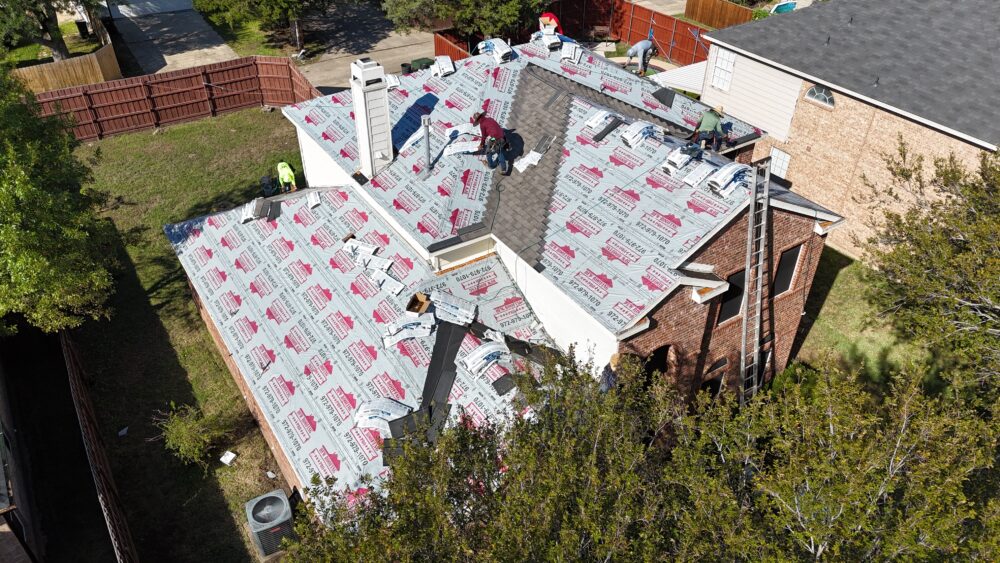How Seasonal Changes Can Damage Your Roof: Prevention Guide
Your residential roof endures a relentless battle against Mother Nature’s seasonal moods, and most homeowners don’t realize the cumulative damage happening above their heads until it’s too late. Recent studies show that 70% of roofing problems stem from seasonal weather patterns, yet many of these issues could be prevented with proper understanding and maintenance.
The impact of seasonal changes on your roof extends far beyond what meets the eye. While you’re enjoying the comfort of your home, your roof experiences dramatic temperature swings, moisture fluctuations, and weather extremes that gradually compromise its structural integrity and protective capabilities.
At DFW Roofing Pro, we’ve witnessed firsthand how seasonal transitions can transform minor vulnerabilities into major headaches for homeowners. Understanding these patterns empowers you to protect your investment and maintain your family’s safety and comfort year-round.

Spring: The Season of Awakening Damage
Spring arrives with a mixed blessing for your roofing system. The warming temperatures cause your roof materials to expand after months of winter contraction, potentially creating gaps in shingles, flashing, and seals. This thermal cycling weakens adhesive bonds and can lead to loose or displaced roofing components.
Heavy spring rains test every vulnerable spot that winter may have created. Water infiltration during this season often reveals problems that developed during colder months but remained hidden under snow or ice. Your gutters face particular stress as they handle increased water volume while potentially dealing with debris accumulated over winter.
Common Spring Roofing Issues
The seasonal transition brings unique challenges that require immediate attention. Damaged or missing shingles become obvious as snow melts away, while ice dam damage from winter becomes apparent through water stains or active leaks. Spring storms can be particularly destructive, combining heavy rain with strong winds that exploit any existing weaknesses in your roofing system.
Summer: Heat Stress and UV Bombardment
Summer’s intense heat creates a different set of challenges for your roof. Prolonged exposure to temperatures that can exceed 150 degrees Fahrenheit on your roof surface causes materials to become brittle and prone to cracking. Asphalt shingles are particularly vulnerable, as excessive heat can cause them to curl, warp, or lose protective granules.
Ultraviolet radiation works constantly to break down roofing materials at the molecular level. This process, known as photodegradation, gradually reduces your roof’s flexibility and weather resistance. The combination of heat and UV exposure accelerates aging and can significantly shorten your roof’s expected lifespan if left unchecked.
Thermal expansion during hot days followed by contraction during cooler nights creates ongoing stress on fasteners, seals, and joints. This daily cycle of expansion and contraction can gradually loosen connections and create entry points for water and pests.
Fall: Preparation and Hidden Dangers
Fall presents both opportunities and threats for your roofing system. While cooler temperatures provide relief from summer’s heat stress, falling leaves and debris can create serious problems if not addressed promptly. Clogged gutters and downspouts can cause water to back up under roofing materials, leading to rot and structural damage.
The seasonal transition also brings temperature fluctuations that can cause condensation issues in your attic space. Poor ventilation combined with temperature differentials can lead to moisture buildup that promotes mold growth and wood rot in your roof structure.
Winter: The Ultimate Endurance Test
Winter subjects your roof to perhaps its greatest challenges. Snow accumulation adds significant weight that can stress your roof structure, while freeze-thaw cycles create conditions perfect for ice dam formation. These ice dams can force water under your shingles, causing extensive damage to your roof deck and interior spaces.
Cold temperatures make roofing materials brittle and more susceptible to impact damage from falling branches or hail. The combination of moisture and freezing temperatures can cause expansion that further opens existing cracks or creates new vulnerabilities.
Protecting Your Investment Through Every Season
Understanding how seasonal changes affect your roof empowers you to take proactive steps that extend its lifespan and maintain your home’s protection. Regular seasonal inspections allow you to identify and address minor issues before they become major problems that require extensive repairs or premature replacement.
Professional maintenance tailored to seasonal challenges provides the expertise needed to navigate these complex interactions between weather and roofing materials. At DFW Roofing Pro, we understand that your roof is more than just a barrier against the elements – it’s the foundation of your home’s safety and your family’s comfort.
Don’t let seasonal damage compromise your peace of mind. Contact DFW Roofing Pro today for a comprehensive seasonal roof inspection and personalized maintenance plan that keeps your home protected through every weather challenge the year brings.
